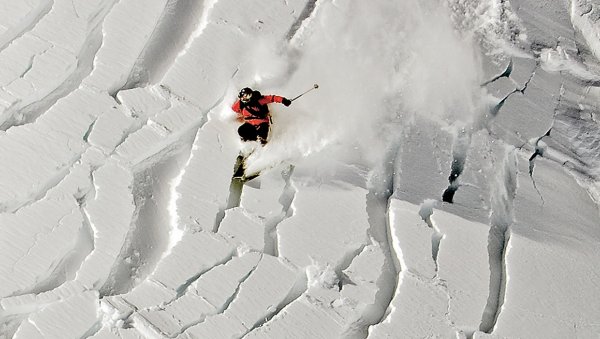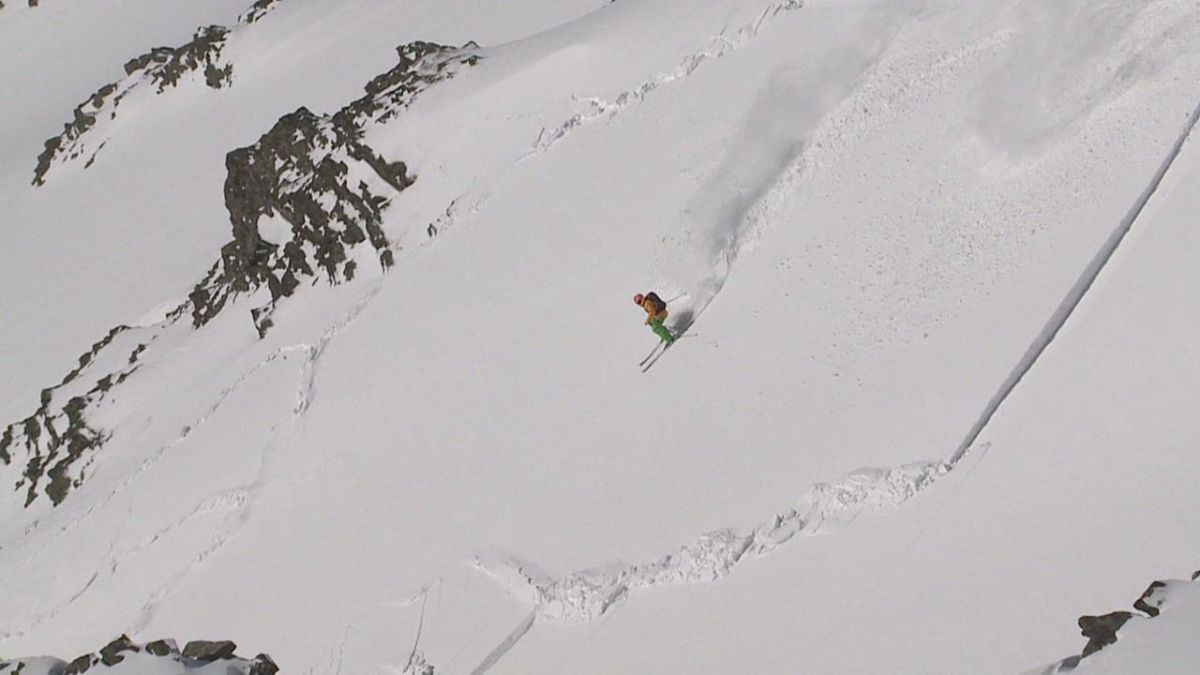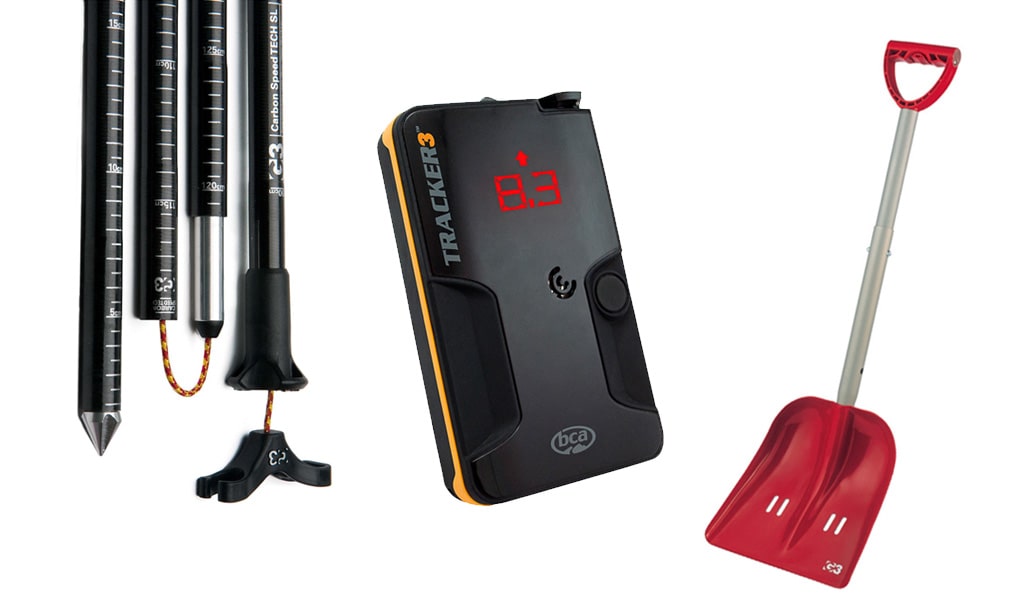
Traveling into backcountry terrain can provide great runs, isolation from crowds, and a feeling of freedom. On the other hand, backcountry travel can prove to be very dangerous and deadly if not approached with respect. Risk of becoming lost, getting injured far from help, or being buried in an avalanche are all potential consequences you will face when traveling into backcountry environments.
There are numerous resources, classes, stories, and informative books or videos that are available to the public now. Understanding and implementing the information learned from these resources is an entirely different step to improving your safety and awareness in the mountains.

A great summary of proper backcountry travel techniques pulled from the book, Staying Alive in Avalanche Terrain, 3rd Edition, by Bruce Tremper is the Ten Commandments of Low-Risk Travel.
- Thou Shalt Go One at a Time-And Leave Someone in a Safe Spot to Preform the Rescue: Resist the urge to ski a line with others, it is much safer to ski one at a time so other members of the group can keep an eye on the skier in the event of an avalanche. This also only exposes one person at a time to possibly avalanche prone slopes.
- Thou Shalt Never Cross Above Others: Crossing above your partners or other groups you may encounter is a major red flag. In the event of causing a slide the likelihood of anyone surviving is quite slim because everyone below the crown will most likely get buried by the slide, leaving no one to perform a rescue.
- Thou Shalt Have an Escape Route Planned: Regardless of if you are going to ski a line from top to bottom or enter with some speed and perform a slope cut to ensure stability it is always good to identify as a group where a planned escape route will be. Knowing where you should head in the event of an avalanche or where your partners should look for you at the base of a run will help reduce stress and make travel easier.
- Thou Shalt Cross High on the Avalanche Path: In the event of triggering an avalanche the likelihood of staying on the surface is much higher the closer you are to the crown of the slide.
- Thou Shalt Never go First: Fresh turns are always tempting but avoiding being first is best. Someone always needs to go first but if possible use a natural trigger to test the stability of the slope first. Cutting a cornice is a very good option just ensure no one is below before releasing it.
- Thou Shalt Start Small and Work Your Way Up: Starting small and working up can relate to almost everything in life. Try and find small test slopes while working towards a larger objective rather than going headfirst into a very high consequence slope with no idea of how the snow will react.
- Thou Shalt be Obsessed with Consequences: Assessing all the possible bad outcomes of a situation, asking yourself and partners how they feel about potential runs, and questioning what you may be doing wrong is never a bad idea. You may discuss something that will make the difference between a tragic day or a wonderful day.
- Thou Shalt Communicate: Communication is key, what is running through your head may not be going through your partners and vice versa. When traveling in a backcountry environment it is very important to all be on the same page to reduce conflict.
- Thou Shalt Pause at Critical Decision Points: Choose the hard right over the easy wrong. Many times, a very simple decision will be the difference between continuing an enjoyable day or beginning a stressful one. This commandment ties directly into communicating with your group to ensure everyone is on the same page.
- Thou Shalt Carry the Right Equipment and Know How to Use it: Having the proper equipment and knowledge of how to use it is a must. Without the right equipment or lacking the skills to use it properly you will be walking on the edge of death for yourself or partners. Train, train, train, and train some more.

Understanding and implementing these Ten Commandments are a great start to ensuring safe backcountry travel but you can always do more. Additional safety practices include taking avalanche classes, practice beacon searches, discuss travel plans, and observe the snowpack throughout the season. You can never learn too much when it comes to recreating in an ever-changing environment.
(Responding to a comment which seems to have been removed…)
What I find odd is that there *is* clearly an order to this list (going from rules that apply primarily in high consequence terrain to rules that apply in all terrain, at all times), but that order is the reverse of what I’d expect. My guess would be that this is designed to prevent readers from stopping when they decide “this doesn’t apply to my skiing”, but that’s only a guess. I suspect that knowing why these rules are listed in the order they are would tell us a lot about how the author thinks about at least the psychological aspect of snow safety.
Implying that the first rules above are equal in kind to the last implies that a level of risk which, frankly, I find rather extreme is both a necessary and inherent part of the sport. The phrase, “perform a slope cut to ensure stability” in particular raises all sorts of red flags. A slope cut is an important option to consider when you really need it, but it *ensures* just about zilch and if you find yourself doing this sort of thing without knowing exactly what you’re getting yourself into ahead of time, something went very wrong with rules 6-10.
My idea of a nice day in the backcountry means giving a wide berth to the sort of terrain where 1-5 really make sense. If I want to ski high consequence terrain, there’s plenty of that in controlled areas.
All good principals to follow, but shouldn’t the order be reversed? If you’re worried about going one at a time and haven’t long since checked and verified every single party member’s equipment, something is very wrong.
You are correct, it is much smarter to ensure your partners are all equipped with correct gear and know how to use it right away. This article has just been reported in the order that the book wrote it. Rather than reading as a step by step guide it should be viewed as 10 important parts of backcountry travel, order does not matter.